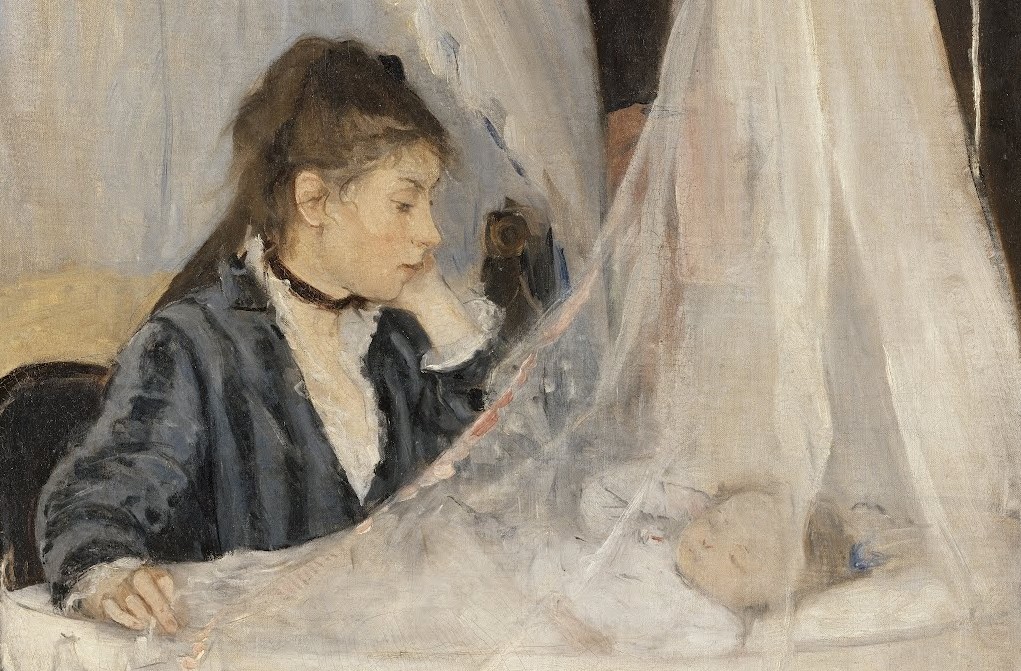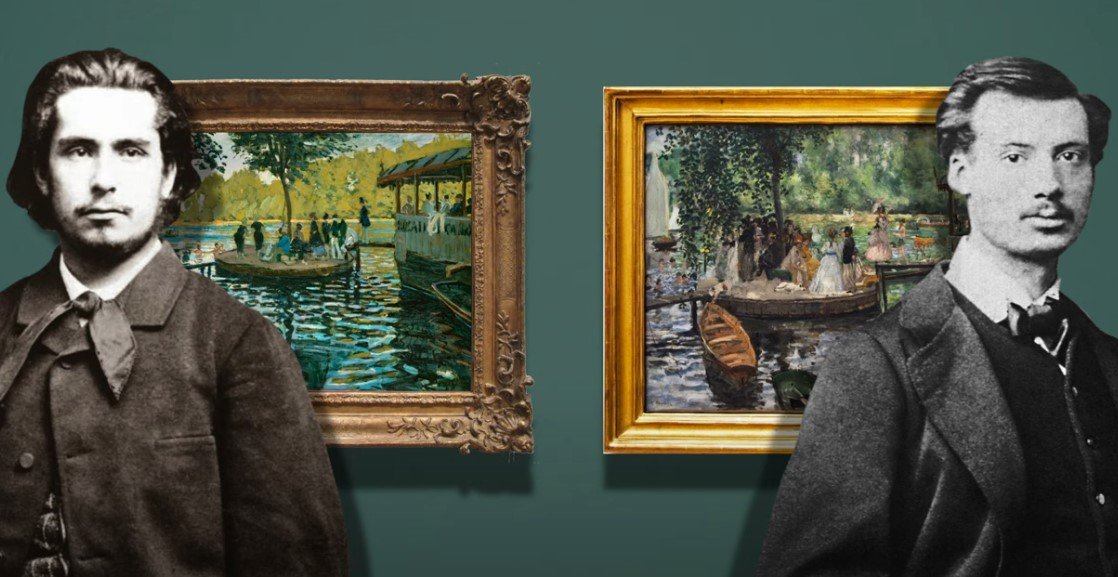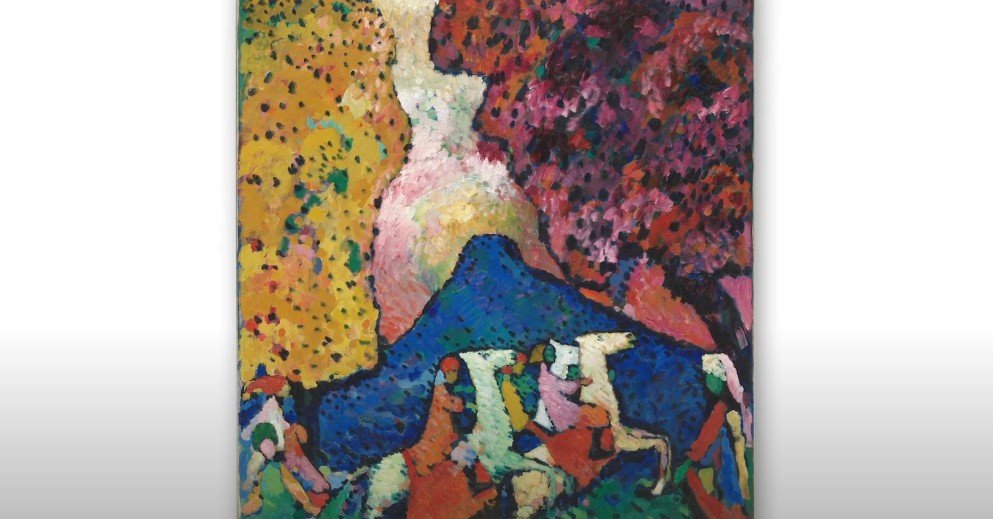Let me take you back in time to 19th century Paris! There, you will come across a painting that exudes beauty and emotion: “The Cradle”, Berthe Morisot’s most iconic work. Painted in 1872, this piece introduces us to a tender and touching instant, where a mother watches over her sleeping daughter.
In this article, I invite you to analyze with me the depth of this painting, where Berthe Morisot manages to capture the very essence of motherhood with a tenderness and serenity that will captivate you. Do not miss the opportunity to reveal the magic of this fleeting moment captured on canvas! Join me 🧐 ..
Table of Contents
- Morisot and ‘The Cradle’: An underestimated exhibition
- The Cradle – Berthe Morisot 1872
Morisot and ‘The Cradle’: An underestimated exhibition

The Impressionist Cradle in Bustling Paris
When Berthe Morisot presented Cradle at the Impressionist exhibition on April 15, 1874, on the bustling Parisian boulevard des Capucines, formerly the Studio of the photographer Nadar (in photo), she marked a milestone as the first woman to exhibit with the group. Despite some praise for its grace and elegance, the painting went unnoticed and failed to sell, having been priced at 800 francs.
The Undervaluing of Female Artists
As you walk through the galleries and notice that almost every painting bears the stamp of a man, you realize that this is more the rule than the exception. Even when examining auction prices and analyzing the art market, it is evident that female artists still do not receive the recognition and value they truly deserve.
From the Challenge of Being a Painter to the Salons of the Louvre
At that time, being a painter was a challenge. The work, called The Cradle, remained in the family, being inherited by Blanche Portillon, niece of the painter and model of the sleeping baby. Finally, it was acquired by the Louvre Museum in 1930, then exhibited at the Jeu de Paume from 1947 to 1986, and finally transferred to the Musée d’Orsay where it rests today.

The Cradle – Berthe Morisot 1872

Date of creation: 1872
Original Title: Le Berceau
Location: Musée d’Orsay, Paris, France
Technique: Oil on canvas
Style: Impressionism
Size: 56 cm × 46 cm
Who influenced Morisot’s “The Cradle”?
The brother-in-law
Édouard Manet influenced “The Cradle” because of his close personal and artistic relationship with Berthe Morisot, who was a sister-in-law and admirer, incorporating aspects of Manet’s innovative style into his work. This includes his loose brushstroke technique and his focus on naturalistic depictions of everyday life.
In the painting, reflections of Manet’s influence can be seen in the way he treats light, shadow and the domestic scene.


A fresh vision of childhood
Claude Monet also influenced “The Cradle” with his innovative approach to depicting childhood. Monet’s portrait of his son, Jean Monet, in his crib in 1867 reflects his attempt to capture motherhood in a new way. Monet’s approach to depicting childhood inspired Morisot in his own work.
Analyzing the cradle of Morisot
Between Modern and Everyday Life
You find yourself in front of a domestic environment of great modernity, where a cradle and an interior take center stage. In the background, a curtain suggests the presence of a modern woman (Edma Pontillon), dressed in contemporary attire, with her eyelids lowered and her chin resting on her hand, while the other arm is extended at an angle over the cradle.
Getting to know the protagonists:


"I love my sister Edma so much that I portrayed her on several occasions during my career" Berthe Morisot 1841-1895
Bonds of Tenderness
The essence of the painting lies in the diagonal that emerges from the mother’s gaze towards her sleeping daughter and the cradle that welcomes her. This line is strengthened by the symmetry between the mother’s bent arm and the baby, further accentuated by the closing of the child’s eyes and the movement of the curtain in the background. The painting creates an emotional connection between mother and daughter. Edma Pontillon’s gesture of pulling aside the curtain between the viewer and the baby intensifies the sense of intimacy and protective love that emanates from the painting, immersing you in tenderness.
The Gaze of Care for the Divine
You observe the baby, wrapped in a soft gauzy net, with an angelic aura surrounding her. The mother’s gaze descends upon her, radiating a subtle concern that is touching and beautiful. This scene evokes images of Mary holding the Christ Child, although in this case, the similarity lies in the loving and protective expression, rather than the physical position. In photo work by Giovanni bellini, madonna of the meadow – 1500.





The inclusion of a pink stripe at the edge of the net or the depiction of the woman’s neck with an elegant looseness, reveal the artist’s skill, highlighting his virtuosity. It is fascinating how these elements bring the work to life, showing a level of creativity that captivates.

The Curious Flatness of Fingers
Observe The way the woman’s fingers are painted with a remarkable flatness, especially those at an angle creates a slight sense of uneasiness, although the exposed upper parts of the fingers capture attention and admiration with their beauty.

I want to pause for a moment to appreciate the delicacy of the brushstrokes. Although I can notice some precise strokes outlining details, such as the strands of hair falling on Edma’s face. The painting shows a fluidity that anticipates later artistic styles.
Morisot Technique & Magic
Thinking of Morisot and her skill with paint, I can’t help but notice the delicate white touches that stand out on the top of the curtain, and even on Edma’s sleeves. Those quick circular movements of paint suggest the texture of her dress, while her tactical choices consciously direct our attention. In this work, Morisot employs a reduced color palette and fluid brushstrokes, creating an atmosphere of great intimacy, gentleness and protective love.
The meaning of “The Cradle” by Morisot
It invites you to reflect on the serious responsibilities of motherhood, but also on the incredible affection and love that surrounds it. The fact that this subject is considered worthy of being depicted in painting is a reflection of the change and evolution in the conception of the middle-class family during the 19th century.
Symbol of Innocence and Life
The name “cradle” evokes images of motherhood. In Morisot’s art, childhood and family life were recurring themes. The “cradle” could symbolize her interest in representing innocence, intimacy and family ties in her work.

Berthe Morisot’s struggle against the barriers imposed on women artists in her time resonates in art history. Her persistence in the face of lack of recognition and opportunity shows the harsh reality faced by many artists in that period. Despite these adversities, Morisot’s legacy shines brightly in Parisian museums, where her works stand out for their uniqueness and emotionality.
Morisot’s contribution to the Impressionist movement is not only limited to his technique, but also connects with the deep traditions of French art. His ability to infuse feeling into his paintings, such as the depiction of a mother contemplating her child, evokes the emotions present in the classical works of the past.



